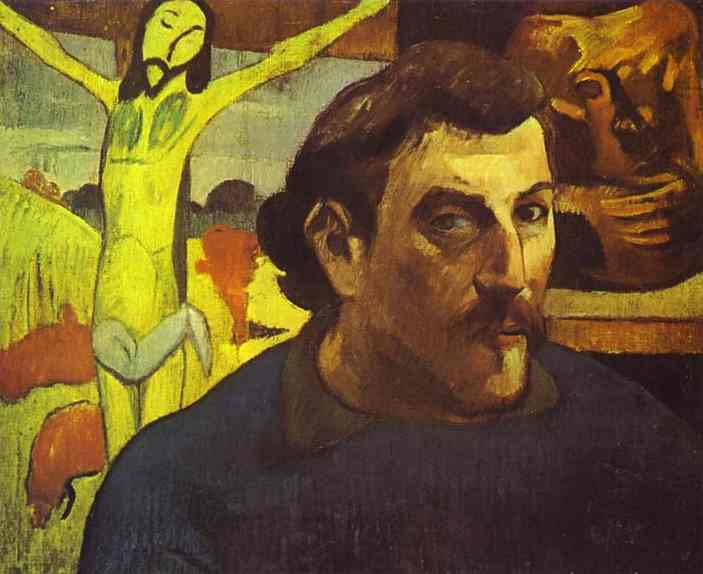Описание
Paul Gauguin’s Self-Portrait with the Yellow Christ, painted in 1890, is a vibrant and deeply symbolic testament to his remarkable post-impressionist style, a style that challenges traditional conventions of art through its bold use of color and form. In this painting, Gauguin places himself at the center of a composition that, while personal, evokes a sense of spirituality and reflection on the human condition.
The figure of the artist is presented in a frontal plane, looking at the viewer with an expression that could be interpreted as introspective or pensive. Gauguin uses a very intense and contrasting colour palette; the yellow and gold tones that predominate in the depiction of Christ seem to radiate an almost divine aura that contrasts with the darker brown earth of his own attire. This association between the subject and the Christ-like figure suggests a deep connection with themes of sacrifice and redemption, often present in the painter's work.
Gauguin’s relationship with religion and spirituality is a recurring theme in his career. In this self-portrait, the yellow Christ appears to be not only a pictorial element, but also a symbol of the artist’s search for a sense of transcendence in his work. This depiction of Christ echoes the work “The Yellow Christ” (1889), which he made in Tahiti, and demonstrates his interest in religious iconography and his personal interpretation of it through colour and form. The choice of yellow for the figure of Christ could be seen as a representation of the symbolism of light and the divine, a way of sacralising the act of creating art.
The use of colour, in addition to being expressive, is structural in the composition of the work. The background is a vibrant field of blue and yellow, which seems to envelop the Christ and Gauguin himself, suggesting a psychedelic and ethereal space where reality and spirituality converge. This technique is characteristic of Gauguin, who often used colour not as a mere naturalistic representation, but as a means of communicating emotions and abstract concepts.
In terms of technique, Gauguin moves away from a purely mimetic representation of reality towards a more symbolic and stylized painting. His clear lines and defined contours give the forms an almost flat character, moving away from the three-dimensional modeling that characterized the impressionism of his contemporaries. The strokes are deliberate and loose, creating a sense of movement and spontaneity that brings this introspective work to life.
Gauguin's figure, although presented in isolation, carries with it the burden of the identity of modern man, a seeker of answers to the chaos of contemporary life. His gaze, which connects with the viewer, invites a reflection on suffering, creativity and purpose. In this sense, “Self-Portrait with the Yellow Christ” is not only a portrait of the artist, but a work that explores the duality of human existence, from light to darkness.
The painting stands as a testament to the concerns of Gauguin, an artist who, through his experiences in Europe and Tahiti, cultivated a unique vision that fuses symbolism, exoticism, and a relentless search for meaning. As we look at this piece, it is possible to sense the intensity of his inner struggles, his desire for transcendence, and the ever-present interplay between art, spirituality, and humanity. In his self-portrait, Gauguin does not merely present himself, but invites viewers on a journey through their own soul, using color and form as vehicles for a profound exploration of the self.
KUADROS ©, a famous painting on your wall.
Hand-made oil painting reproductions, with the quality of professional artists and the distinctive seal of KUADROS ©.
Painting reproduction service with satisfaction guarantee. If you are not completely satisfied with the replica of your painting, we will refund 100% of your money.

